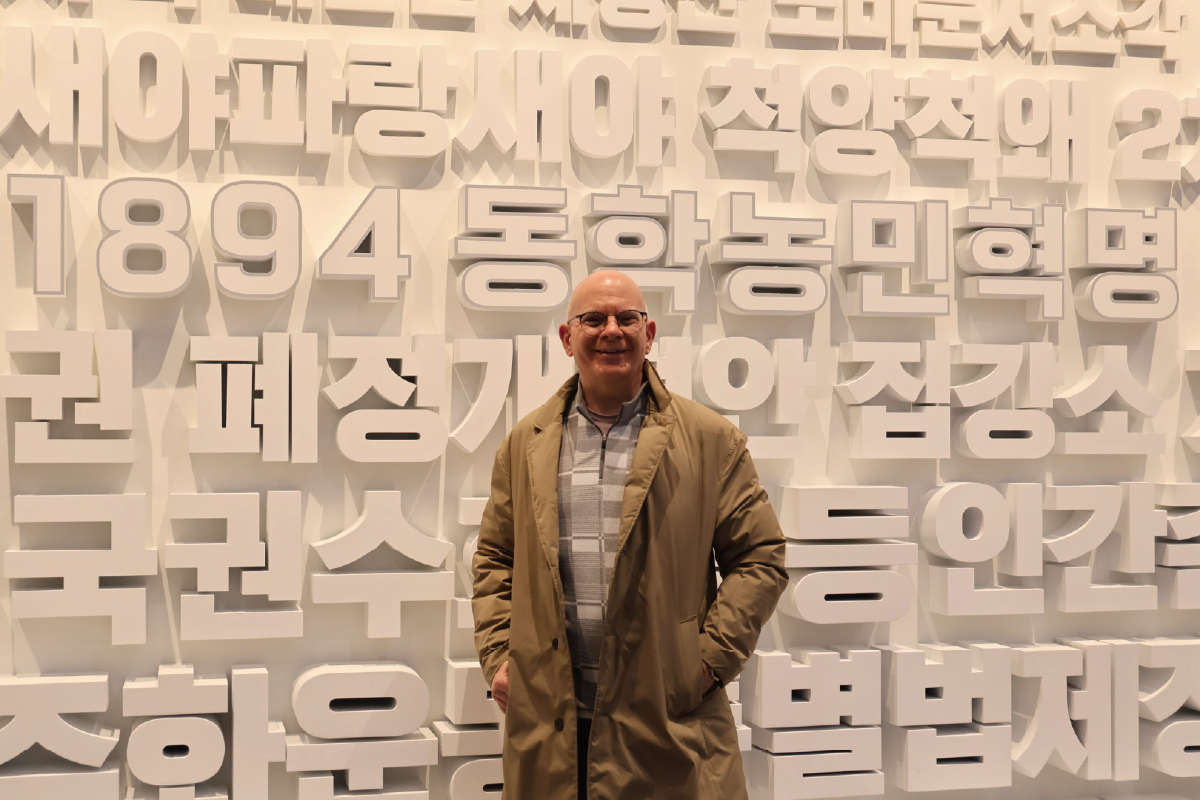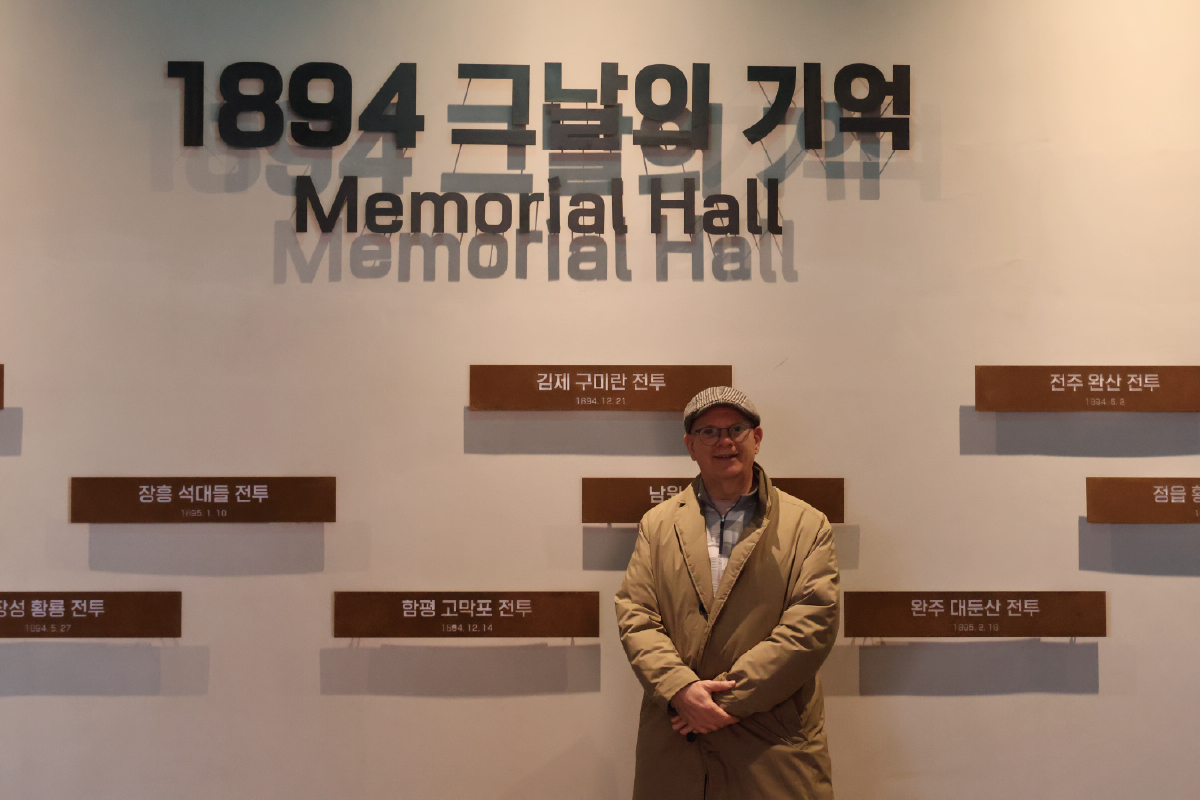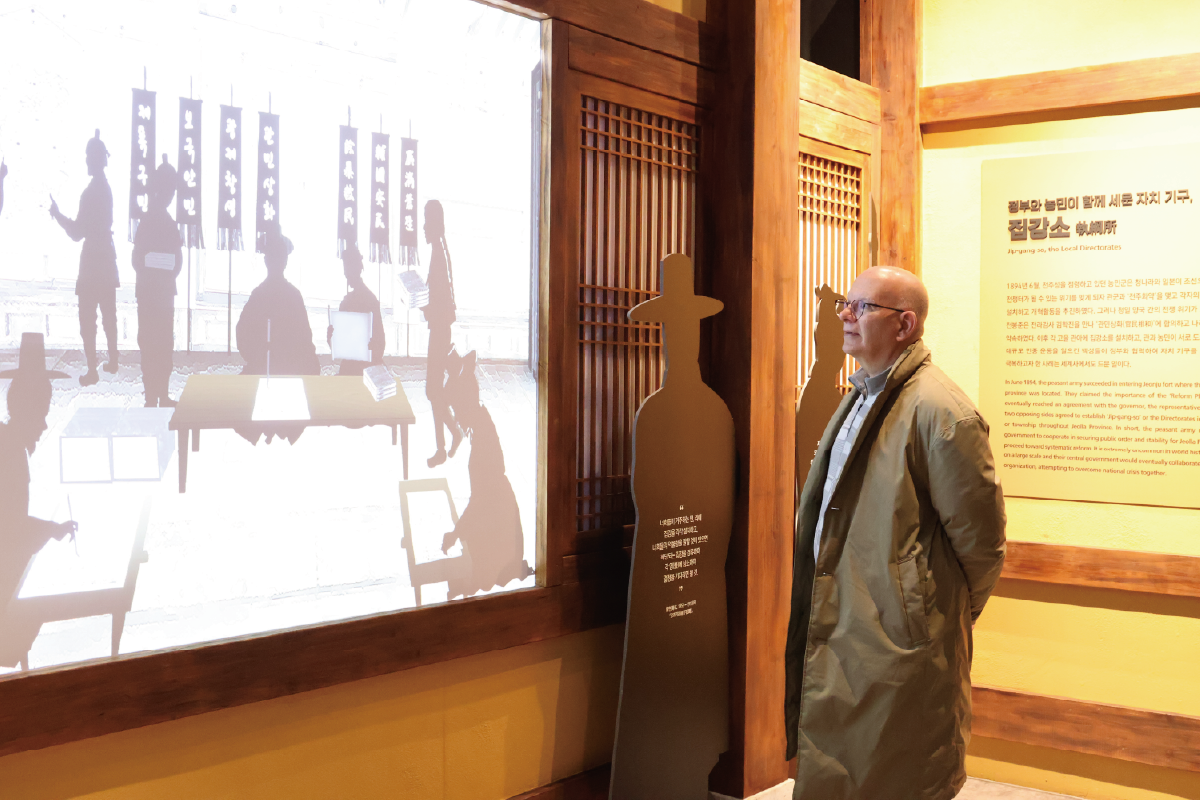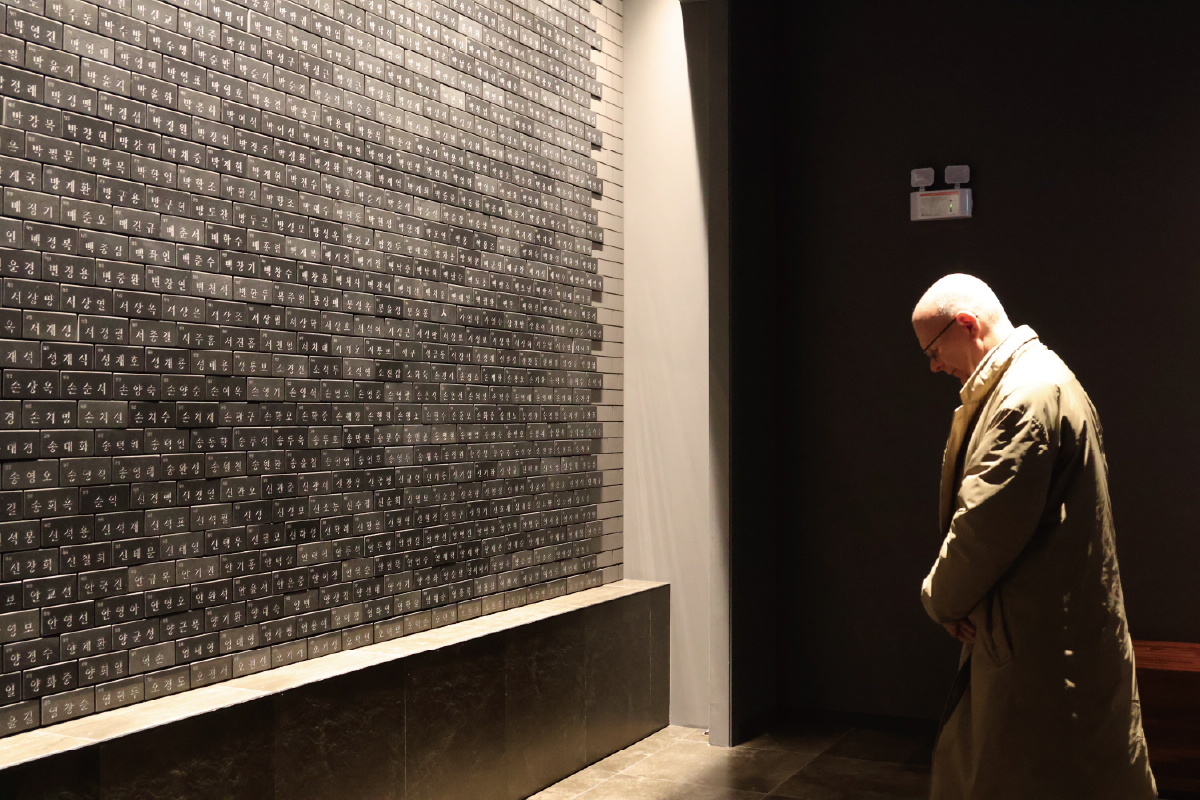
한국 민주주의 뿌리를 생생하게 느낀 동학농민혁명기념공원
Donghak Peasant Revolution Memorial Park, where I vividly felt the roots of Korean democracy
 (2024.2.20. 동학농민혁명기념공원 방문)
(2024.2.20. 동학농민혁명기념공원 방문)
Thomas Giammarco(토마스 지암마르코) / 미국
1995년에 한국에 와서 29년 동안 학생들에게 영어를 가르치고 있다. 1998년도부터 우석대학교(전북특별자치도 완주군) 영어교육과 교수와 외국어교육센터 소장으로 근무하고 있다.
Thomas Giammarco / America
He came to Korea in 1995 and has been teaching English to students for 29 years. Since 1998, he has been working as a professor in the Department of English Education and the Director of the Foreign Language Education Support Center at Wooseok University in Wanju-gun, Jeonbuk State.
저는 1995년 한국에 와서 29년째 살고 있습니다. 처음 한국에 와서 학생들에게 영어를 가르쳤습니다. 1998년부터 전북특별자치도 완주군 삼례읍 소재 우석대학교 영어교육과 교수로 임용되었고, 동시에 동 대학의 외국어교육지원센터장 직책을 맡아 지금까지 근무하고 있습니다. 한국에 오기 전에 아프리카 말라위, 자메이카, 사모아 제도의 리온 등에서 봉사활동을 했습니다. 이렇게 세계 여러 나라를 다니면서 세상은 제가 배운 것보다 넓다는 것을 알게 되면서 여러 나라의 역사와 문화에 관심을 가지게 되었습니다.
저는 한국에서 오랫동안 살면서 드라마와 영화 등을 통해 한국어와 한국의 역사를 배웠습니다. 그 과정에서 1896년부터 1899년까지 발행된 『독립신문』 영문판을 우연히 접하게 되었습니다. 이 신문은 한국에서 최초로 한글과 영문으로 발행되었습니다. 3년 동안 발행된 그 신문을 읽고서 한국의 역사를 좀 더 깊이 있게 이해할 수 있었습니다.
I came to Korea in 1995 and have been living here for 29 years. When I first came to Korea, I taught English to students. In 1998, I was appointed as a professor of the English Education department and at the same time as the director of the Foreign Language Education Support Center at Wooseok University located in Samrye-eup, Wanju-gun, Jeonbuk State until now. Before coming to Korea, I did volunteer work in Malawi in Africa, Jamaica and Leone on the Samoan Islands, As I went to many countries around the world, I realized that the world is wider than I learned and I became interested in the history and culture of many countries.
Back in the 1990s, I learned the Korean language and Korean history through dramas and movies. Then, by chance, I came across the English version of the 『The Independent』 newspaper published from 1896 to 1899. This newspaper was published in both Korean and English for the first time in Korea. After reading all the articles in the newspaper, which were written for three years, I was able to understand the Korean history more deeply.


지난달, 제가 한국 역사에 관심이 있다는 것을 아는 지인이 전북특별자치도 정읍에 있는 동학농민혁명기념공원을 소개해주었습니다. 그래서 지난 2월 20일에 제가 가르치는 학생들과 함께 동학농민혁명기념공원을 방문하였습니다. 드넓은 공간에 펼쳐져 있는 기념공원에 들어서자마자 가슴이 확 트였습니다. 기념공원 곳곳에는 기념조형물이 세워져 있었고, 박물관도 갖추고 있었습니다. 박물관의 전시물은 동학농민혁명의 역사를 생생하게 느낄 수 있도록 잘 구성되어 있었습니다.
저는 동학농민혁명에 대해서는 동학농민군이 고부에서 봉기한 후 전주를 점령했고, 일본이 한국을 침략하자 다시 일어나 일본군에 맞서 싸웠다는 정도로만 알고 있었습니다. 그런데 이번에 박물관을 돌아본 후 19세기 조선을 둘러싼 국제적인 상황과 동학농민혁명이 일어날 수밖에 없었던 배경에 대해서도 이해할 수 있었습니다. 나아가 동학농민혁명이 한국 민주주의 역사에 끼친 영향에 대해서도 알게 되었습니다.
기념공원의 여러 기념시설물 중 가장 가슴에 와닿았던 것은 추모관이었습니다. 추모관 내부 벽면에는 약 4천 명의 동학농민군 이름이 새겨져 있습니다. 이름 없이 희생된 수많은 농민군을 생각하면 참여자는 훨씬 많았을 것입니다. 올해가 동학농민혁명 130주년이라고 합니다. 130년 전에 동학농민군이 꿈꾸었던 ‘모든 사람이 존중받는 세상’은 오늘 우리가 살아가는 평등한 세상의 바탕이라고 생각합니다. 한국의 근현대 역사에서 중요한 기점이 되었던 동학농민혁명에 대해 깊이 있게 알 수 있도록 제게 기념공원 방문을 권유하신 분께 깊이 감사드립니다. 아울러 한국 남부지방 여행을 계획하고 있는 분들에게 정읍에 있는 동학농민혁명기념공원 방문을 강력히 추천합니다.
Last month, an acquaintance who knew that I was interested in Korean history introduced me to Donghak Peasant Revolution Memorial Park in Jeongeup, Jeonbuk State. So, on February 20th, I visited Donghak Peasant Revolution Memorial Park with the students I teach. As soon as I entered the memorial park I felt like my heart opened because the park was so vast. Memorial sculptures were erected throughout the memorial park and there was also a fascinating museum. The exhibits were designed to experience the history of the Donghak Peasant Revolution very vividly.
About the Donghak Peasant Revolution, I only knew that the Donghak Peasants have occupied Jeonju after the uprising in Gobu, and when Japan invaded Korea, it rose again to fight against the Japanese military. However, after visiting the museum this time, I was able to understand the international situation surrounding the Joseon Dynasty in the 19th century and the context that led to the Donghak Peasant Revolution. Furthermore, I learned about the influence of the Donghak Peasant Revolution on the history of Korean democracy.
Among the various memorial facilities in the memorial park, the one that touched my heart the most was the memorial hall. Inside the memorial hall, the names of approximately 4,000 members of the Donghak Peasants are engraved on its walls. If we consider the numbers whose names are not even known, the number of participants would have been much more higher. This year marks the 130th anniversary of the Donghak Peasant Revolution. I think the "world where everyone is respected" that the Donghak Peasants dreamed of 130 years ago is the basis of the impartial world we live in today. I am deeply grateful to my acquaintance who encouraged me to visit the memorial park to learn in depth about the Donghak Peasant Revolution, which became an important starting point in Korean modern history. I also highly recommend those who plan to travel to the southern part of Korea to visit the Donghak Peasant Revolution Memorial Park in Jeongup.


토마스 교수와 학생들 추모관에서 묵념하는 토마스 교수
번역: 오진경(『녹두꽃』편집자)









